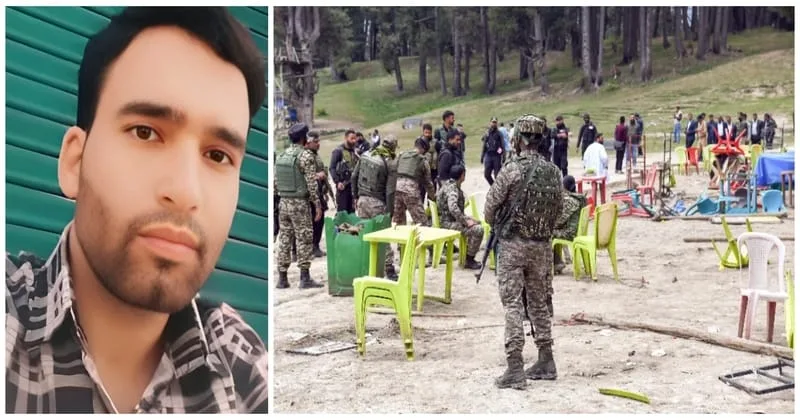Who is Adil Hussain Thoker?
Adil Hussain Thoker, the alleged mastermind behind the brutal April 22 Pahalgam terror attack, once led an ordinary life as a teacher in Jammu and Kashmir. According to multiple media reports, Thoker was one of the six gunmen responsible for killing 26 people, many of them innocent civilians.
The Resistance Front (TRF), an offshoot of Pakistan-based terror group Lashkar-e-Taiba (LeT), claimed responsibility for the assault that shocked the nation. But the bigger question remains: how did a young man from a small village turn into an architect of such carnage?
Early Life: A Teacher from Guri Village
Born and raised in Guri village in Anantnag district, Thoker came from a modest, land-owning family. His father, Waliohammad Thoker, and his two brothers were known figures in the local community. After completing his post-graduate education, Adil Hussain Thoker began working as a teacher.
However, even during his teaching years, subtle signs of radicalisation were visible. Thoker frequently attended religious gatherings and the funerals of militants killed by security forces—a common practice in the region, which at the time drew little suspicion.
By 2018, Thoker’s radicalisation deepened, culminating in a fateful journey to Pakistan.
Radicalisation and Pakistan Connection
In 2018, Thoker traveled legally to Pakistan via the Wagah border using a Valid Travel Document (VTD). Soon after crossing over, he vanished from public sight. Intelligence reports later confirmed that Thoker had joined the Lashkar-e-Taiba and was undergoing ideological indoctrination and paramilitary training.
For months, Indian intelligence agencies lost track of his digital footprint. Surveillance on his Anantnag home yielded no results. It became evident that he had cut all ties with his family and community, fully immersing himself in terror training.
Thoker, who also went by the alias Adil Guri, was later reported moving across difficult terrains in Kashmir, including Rajouri and Poonch, using dense forests and steep hills to evade detection.
Plotting the Pahalgam Massacre
Investigations suggest that Thoker collaborated closely with LeT commanders Saifullah Kasuri and Abu Musa to plan the Pahalgam attack. Eyewitnesses reported seeing the attackers flee into the Pir Panjal forests following the massacre. Intelligence sources had flagged Thoker’s presence in Pahalgam just days before the attack.
Thoker’s expertise in the local terrain proved invaluable. Familiar with the hilly belts of Tral and other insurgent routes, he is believed to have guided Musa and other operatives through the area. He provided not just logistical support—sheltering them in forest camps and village hideouts—but also scouted Baisaran meadow, one of Kashmir’s newly reopened tourist destinations, as the attack site.
Officials say Thoker played a critical role in helping Pakistani terrorists infiltrate India and integrate into local sleeper cells, waiting for the right moment to strike.
The Aftermath: Massive Manhunt Underway
Following the attack, security forces launched an intensive manhunt for Thoker and his associates. His home, along with that of another accused, was demolished after explosives were found during raids.
Indian authorities announced a ₹20 lakh reward for information leading to his capture. Intelligence inputs also linked Thoker to the late Uzair Khan, a top TRF commander, suggesting that Thoker had been deeply embedded within Kashmir’s terror network for years.
Meanwhile, India retaliated diplomatically against Pakistan, downgrading ties, revoking visas for Pakistani nationals, suspending the Indus Waters Treaty, and closing the Attari land transit point in response to the cross-border links behind the Pahalgam attack.
A Grim Reminder of Radicalisation’s Reach
The transformation of Adil Hussain Thoker from an educated teacher to a brutal terror mastermind serves as a chilling reminder of how radicalisation can destroy lives and destabilise regions. It highlights the urgent need for early intervention strategies, community vigilance, and stronger counter-radicalisation efforts.
As security forces continue their operations to apprehend Thoker and dismantle the terror networks he helped fortify, one thing is clear: vigilance against extremism must remain a top priority for both local communities and national agencies.
(With inputs from agencies)





